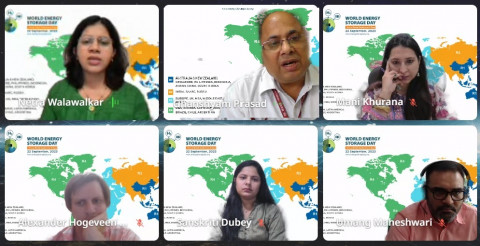Indian public sector power company THDC India Ltd has inauguration the country's largest green hydrogen pilot project at its office complex in Rishikesh, Uttarakhand.
THDC Chairman and Managing Director R K Vishnoi, who inaugurated the project, said it would produce 50 kg of green hydrogen every day, using energy from a 1 MW rooftop solar plant.
The green hydrogen will be stored in two storage tanks and be utilized during night hours for illumination of the THDC office complex though a 70 KW PEM fuel cell.
Senior THDC officials including Shallinder Singh, Director (Personnel) and Bhupender Gupta, Director (Technical), and other senior officers were also present.
THDC's pilot will serve as a demonstration of key technologies involved in production of green hydrogen, as well as hydrogen storage. The project, dubbed India's largest electrolyzer-end fuel cell-based pilot, features a proton exchange membrane (PEM) hydrogen fuel cell-based microgrid system.
India's minister for power and new and renewable energy, R K Singh, has emphasized the country's commitment to energy transition and commitment to reduce emissions intensity according to its Nationally Determined Contributions.
The country plans to become energy independent by 2047 and is aiming to achieve 5 million metric tons of green hydrogen production by 2030. India has also issued a definition of green hydrogen, with the government supporting both electrolyzer- and biomass-based pathways of production. The Center is also looking to set up 4-5 hydrogen valleys across India.

WESD 2023: India’s GH2 journey has only just begun, electrolysers need manufacturing fillip -
Read More

